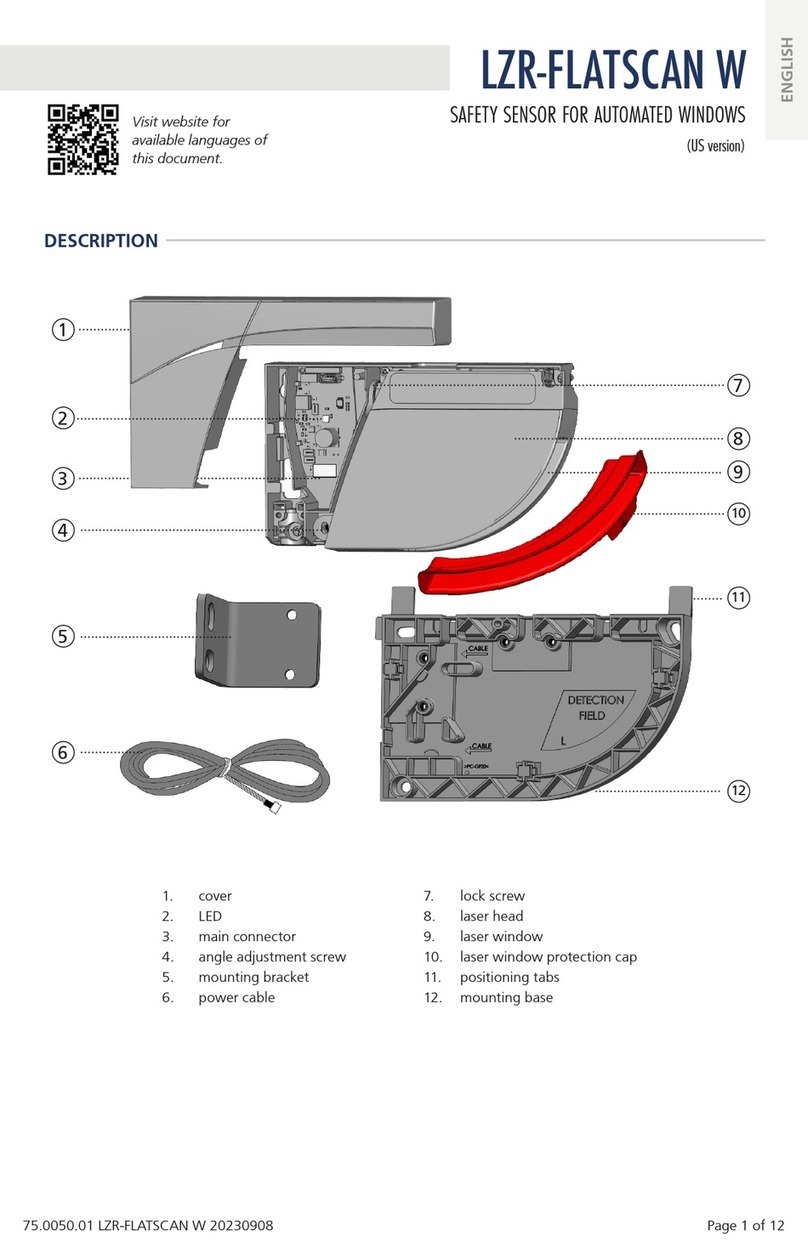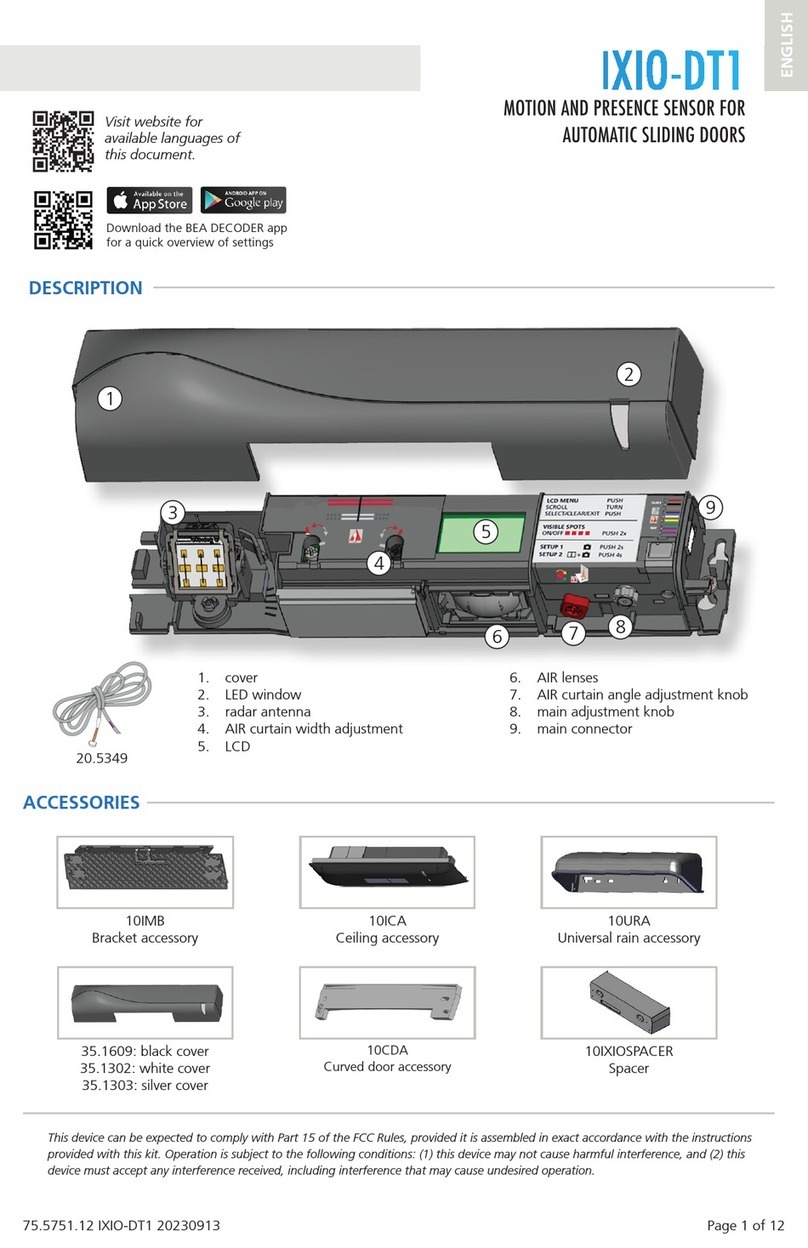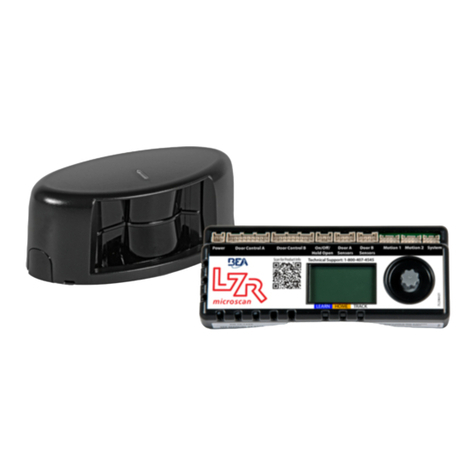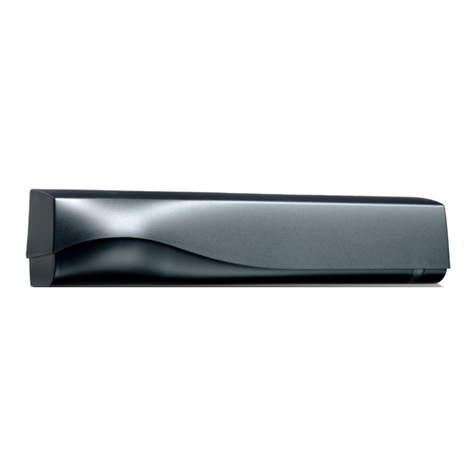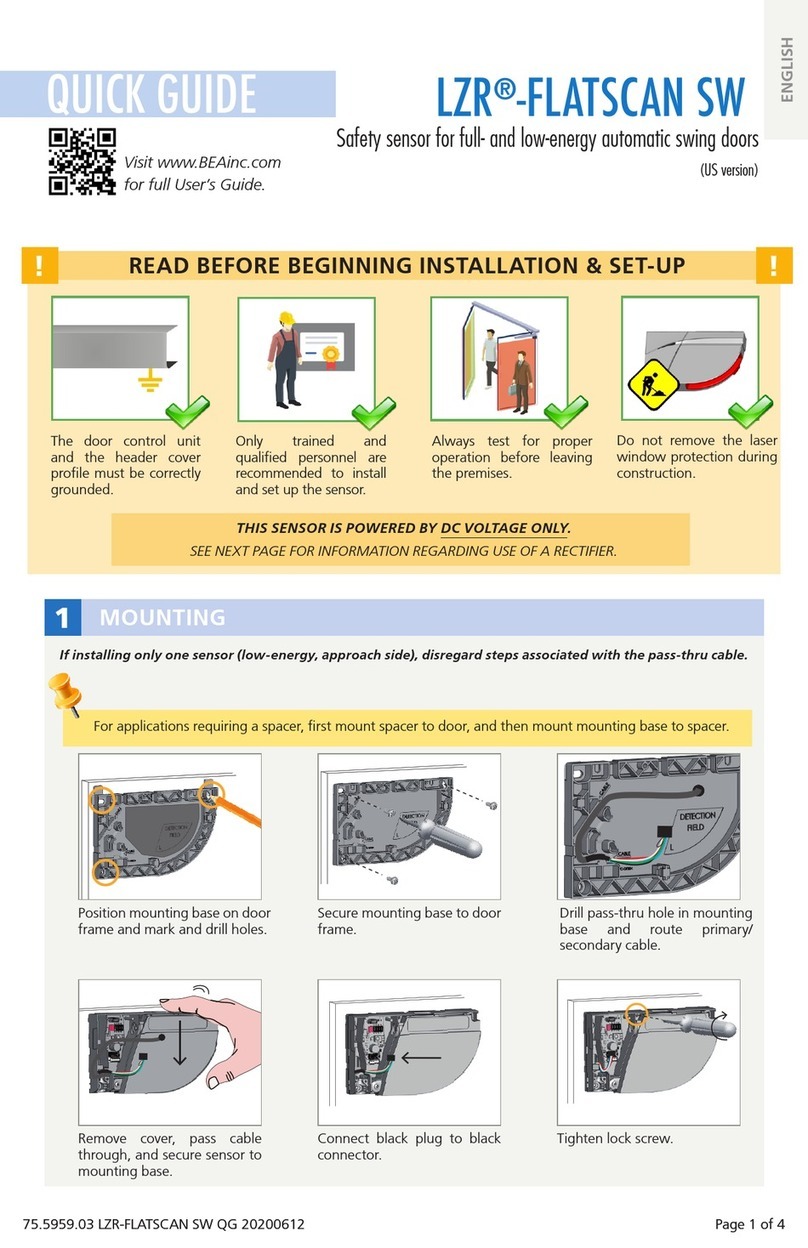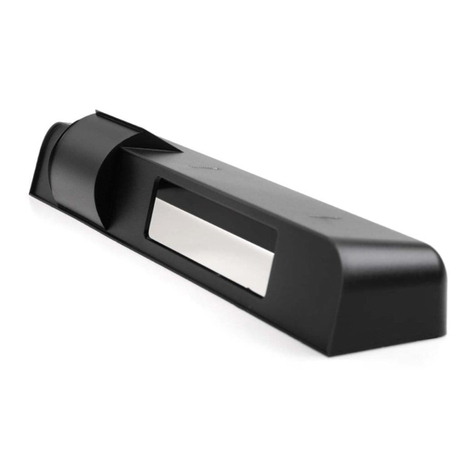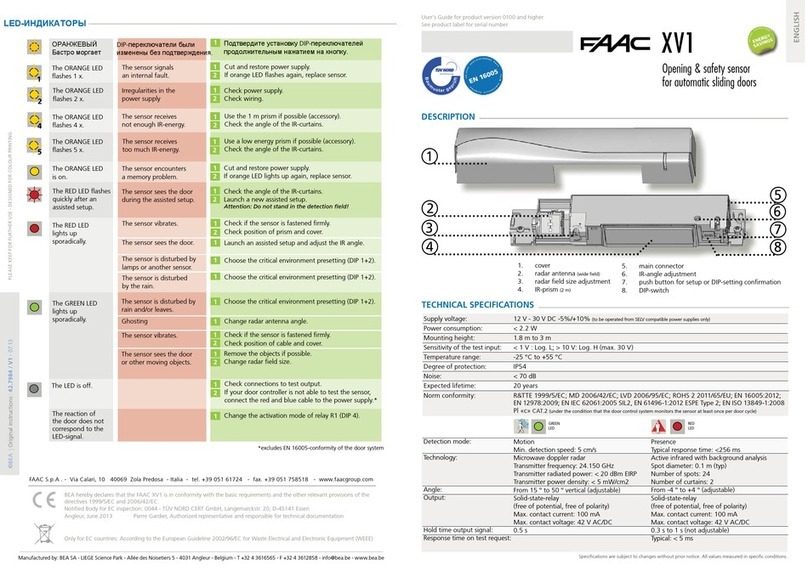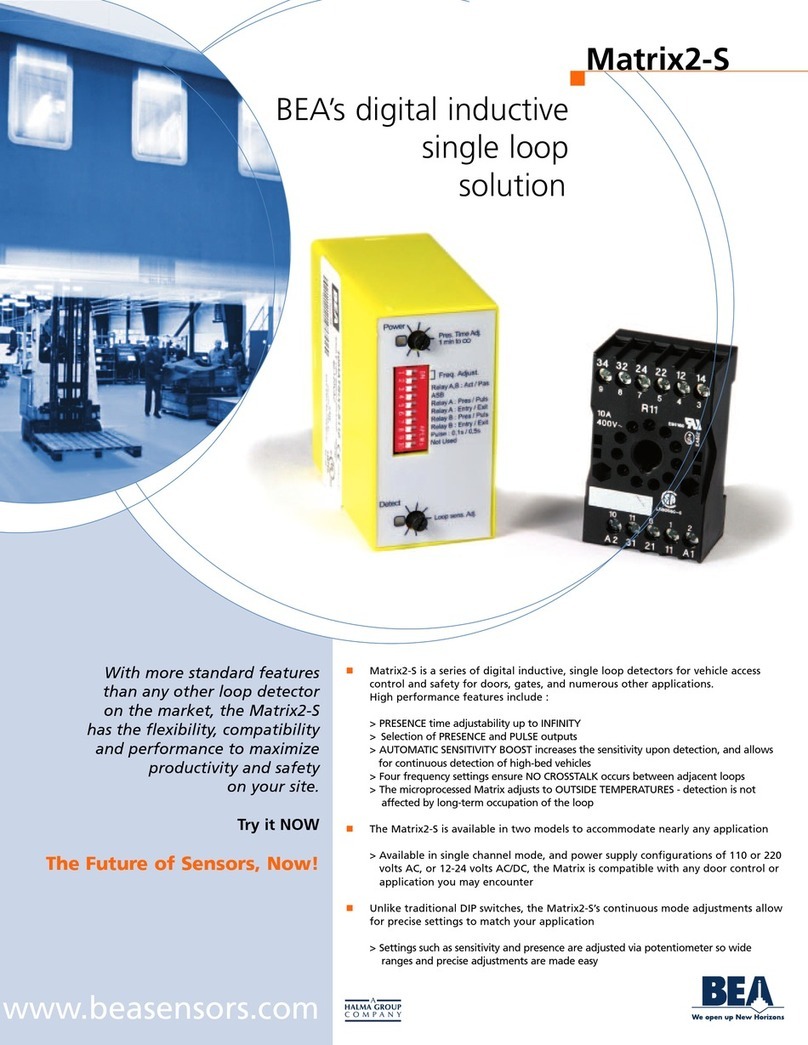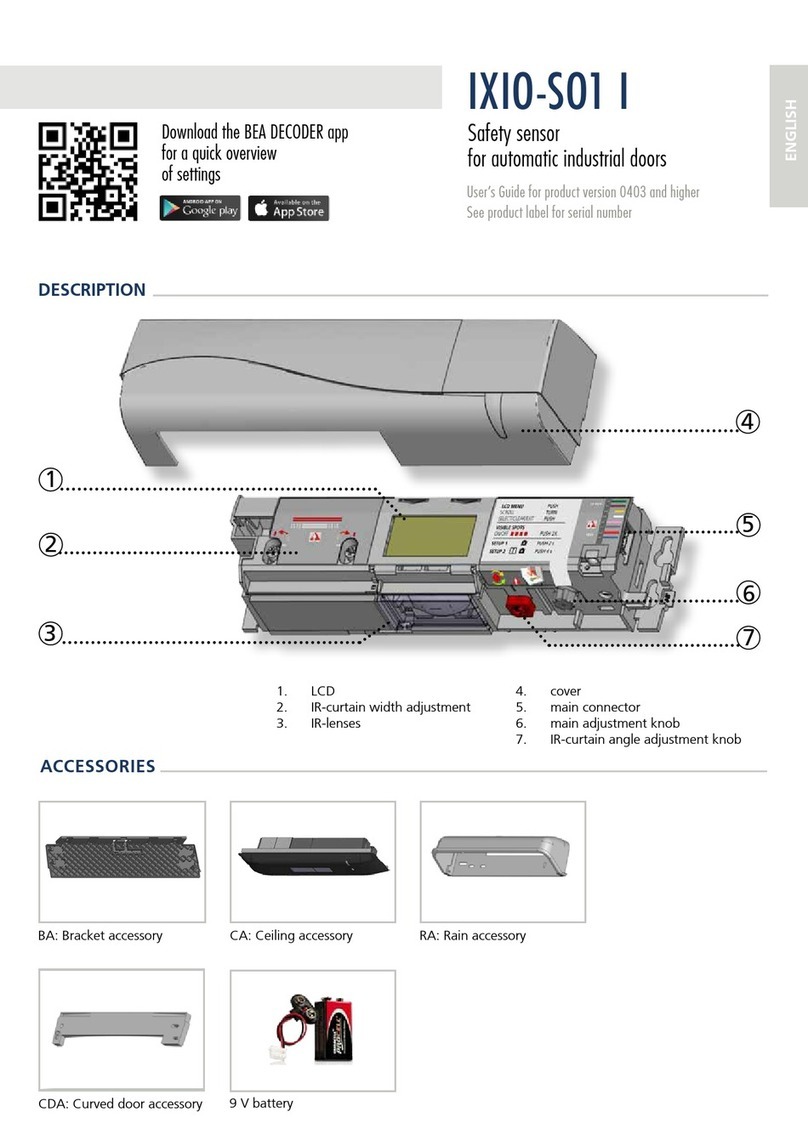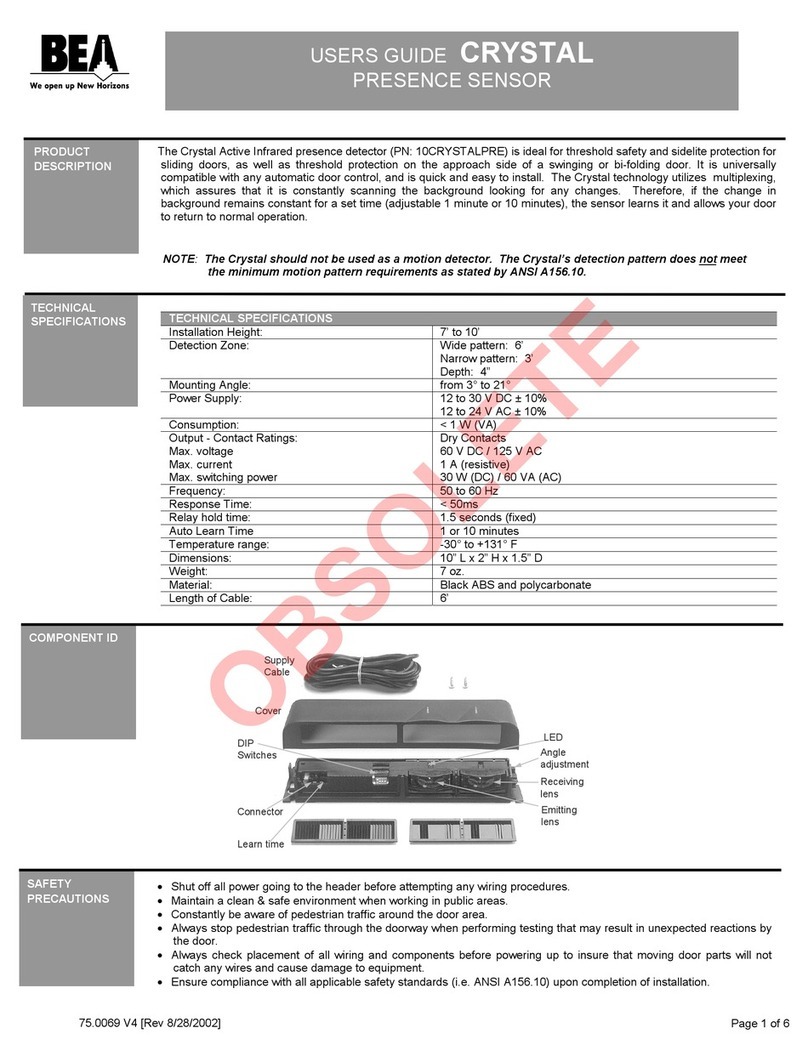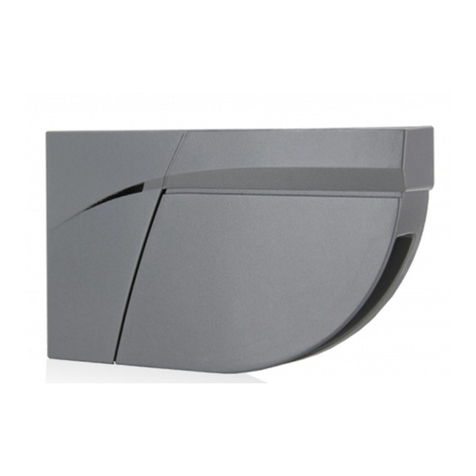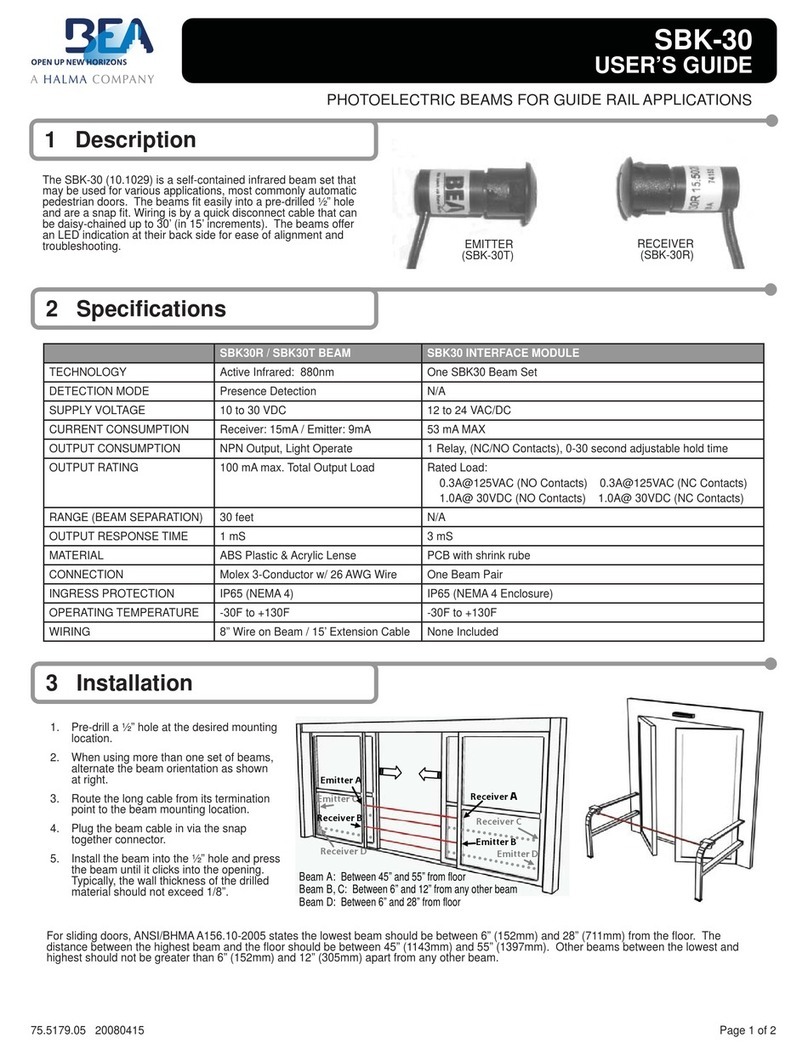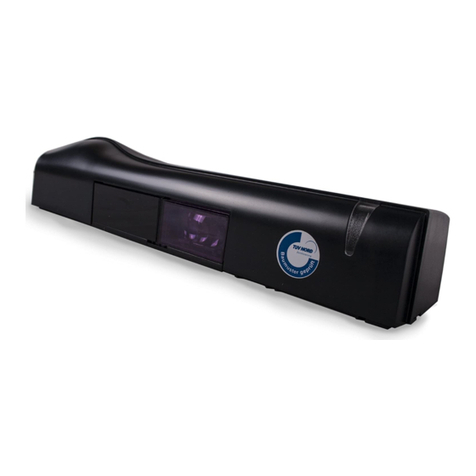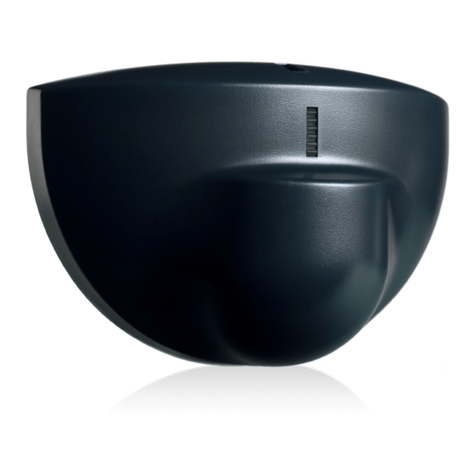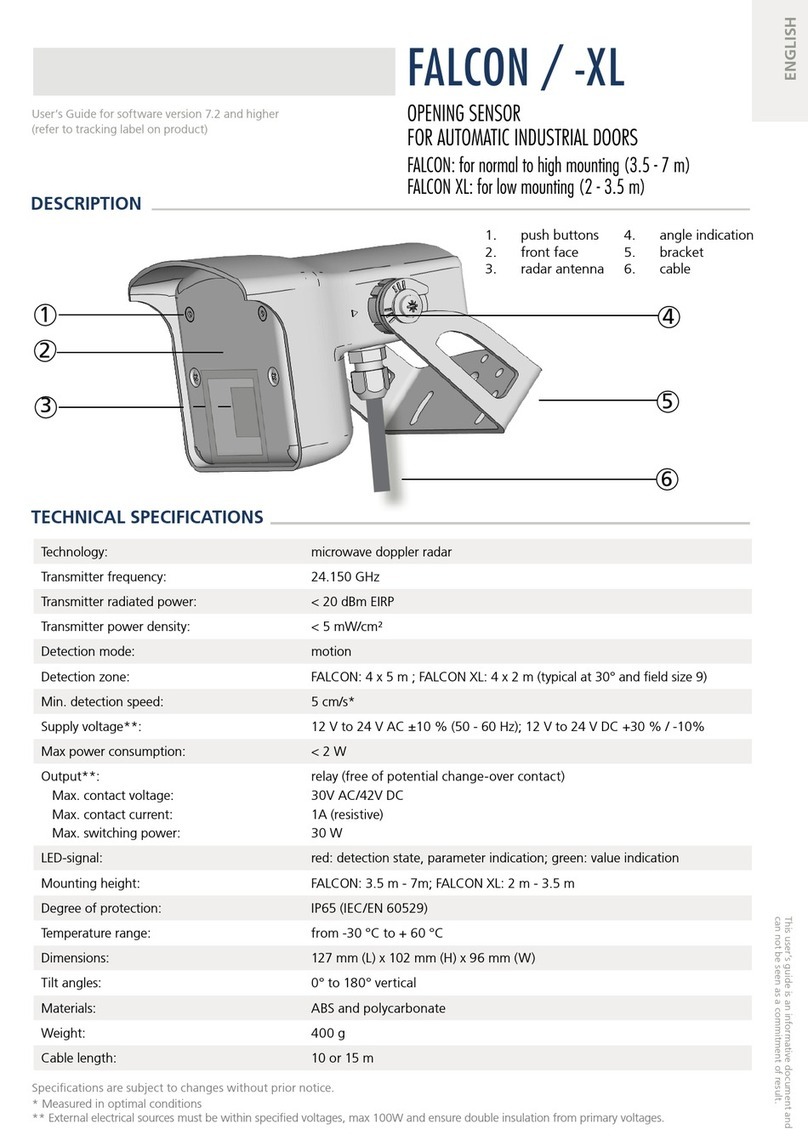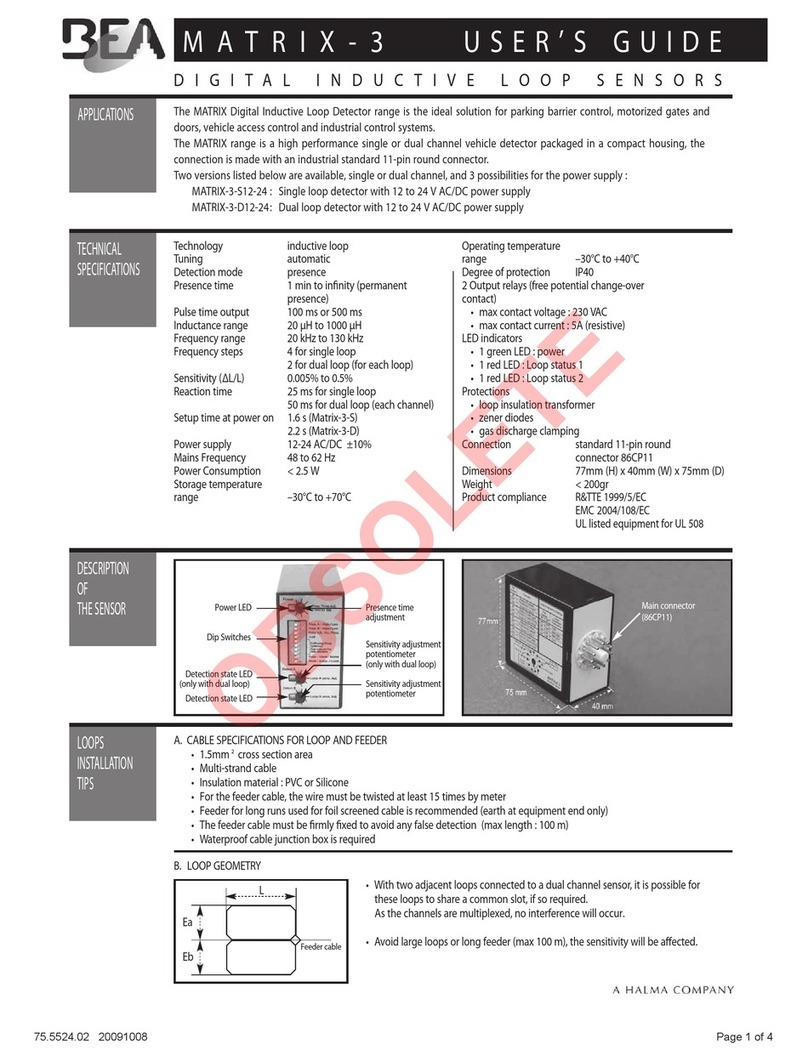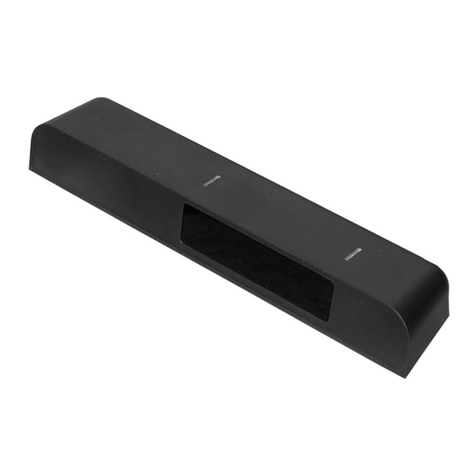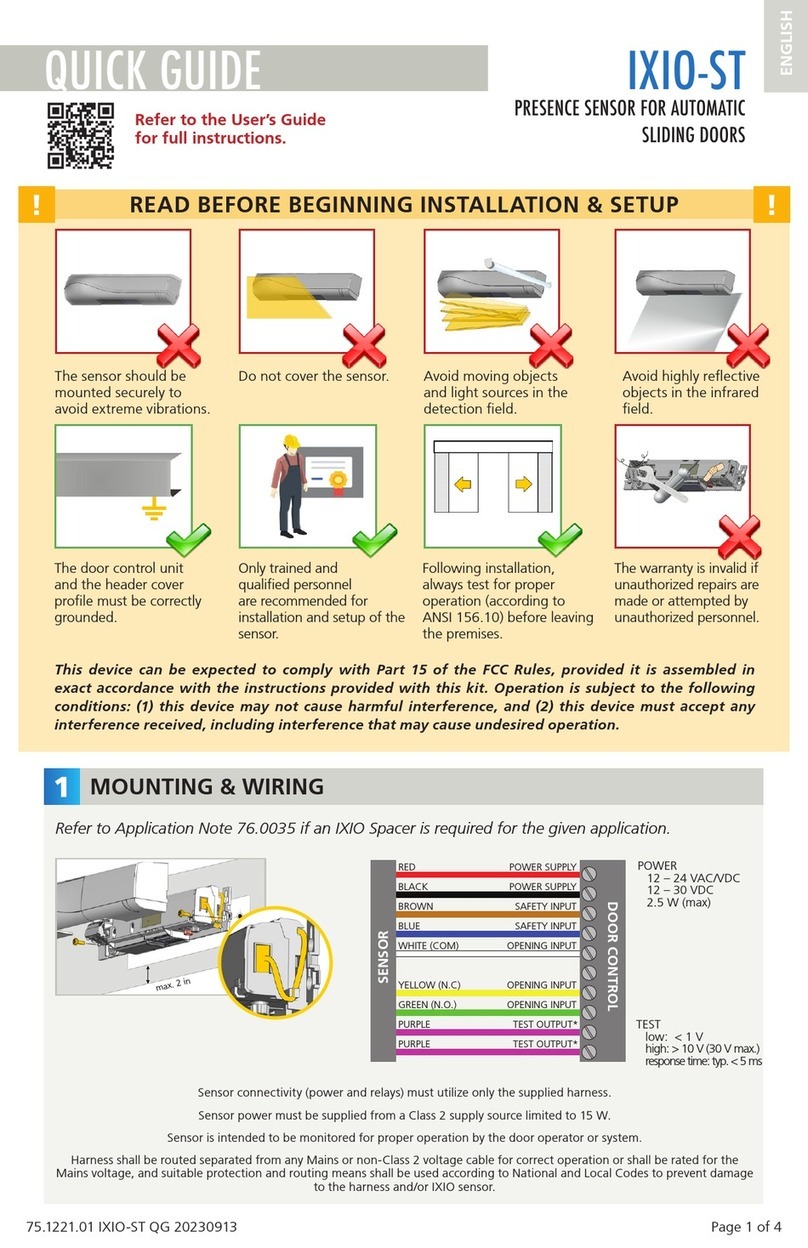
6
MASTER
7
7
5
«click»
«click»
TEACH-IN
Close the cover starting on the
narrow side. Do not hesitate to push.
Remove the positioning aids from
the base.
Before launching a teach-in, make sure that:
- the door is closed (use the service mode if needed).
- both relays are connected to the door controller and the master-slave cable is connected between the modules.
- the detection field is free of snow buildups, heavy rain, snowfall, fog or other moving objects or people.
During the teach-in the sensor learns its environment. If an object is positioned permanentely near the door, the field
size will be adapted accordingly. Launch a teach-in after changing the environment or the sensor position or angle.
* A teach-in on the MASTER configures both the MASTER and the SLAVE. A teach-in on the SLAVE only configures
the SLAVE.
Launch a teach-in on the MASTER module by push button or remote control*.
1. Wait until the LED flashes green, then indicate the edge of the door wing with your hand.
2. Wait until the LED flashes green again and activate an opening and closing cycle of the door.
3. Wait until the LED goes out.
The service mode deactivates the safety detection during 15 minutes and can be
useful during an installation, a mechanical teach-in of the door or maintenance work.
To enter the service mode, push on the button for at least 2 seconds.
To exit the service mode, push again for at least 2 seconds.
The service mode is deactivated automatically when launching a teach-in.
To open the sensor again, position a
screwdriver in the slot and push until
the cover comes loose.
FINAL STEPS
ALWAYS TEST THE GOOD FUNCTIONING OF THE INSTALLATION BEFORE LEAVING THE PREMISES.
SERVICE MODE
